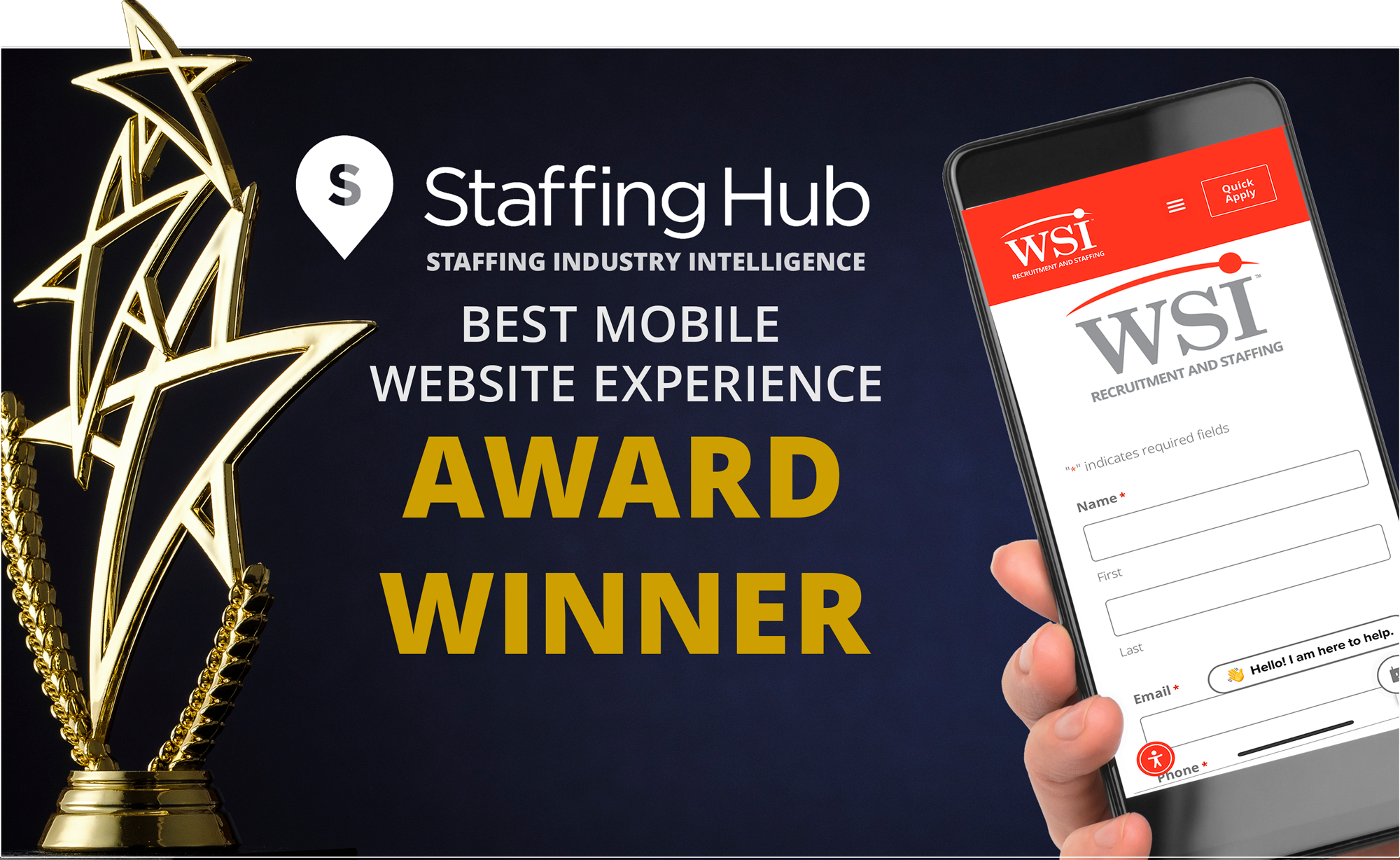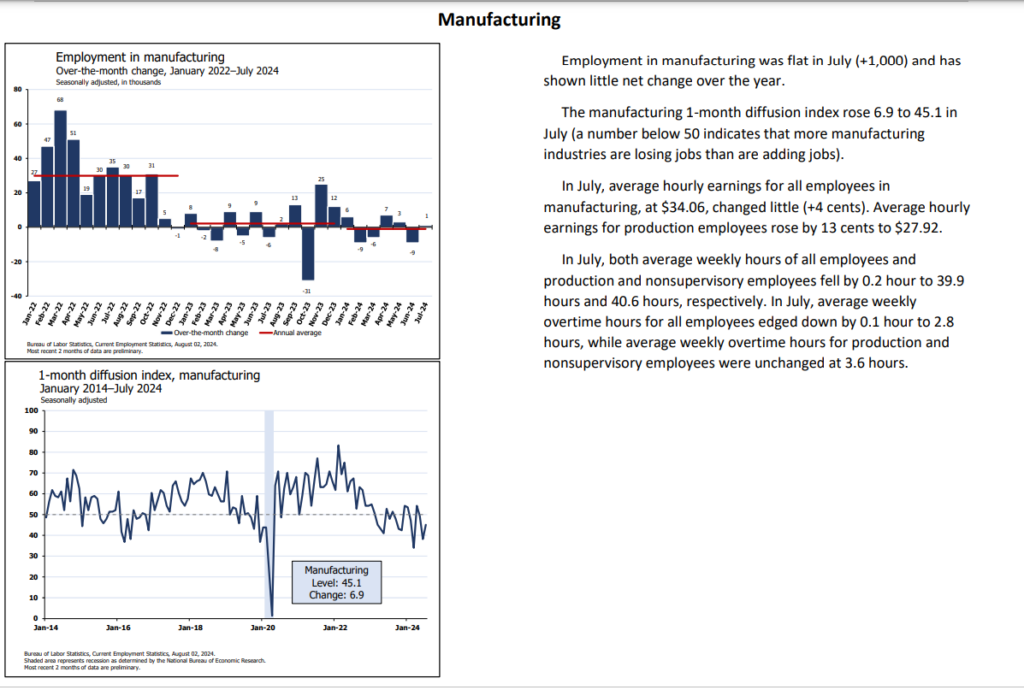WSI Wins ‘Best Mobile Experience’ in Staffing Hub’s Inaugural Staffing Agency Website Awards
WSI’s mobile site recognized for fast load times, optimized layout, and user-friendly navigation in the staffing industry’s premier benchmarking report
Kalamazoo, MI — [9/20/2024] — WSI, a leader in staffing and workforce solutions, is proud to announce its recognition as the winner of Best Mobile Experience in Staffing Hub’s inaugural Staffing Agency Website Awards. This award highlights WSI’s commitment to providing a top-tier digital experience for its clients and job seekers alike, placing the company among the best in the staffing industry.
The award comes after a rigorous evaluation of the industry’s top-performing websites, with WSI’s mobile site standing out for several key performance metrics:
- Fast Load Times: WSI’s mobile site ensures that users can access the information they need quickly, reducing delays and optimizing performance. According to Staffing Hub, the average load time for WSI’s mobile site is 30% faster than industry benchmarks.
- Optimized Mobile Layout: Designed with a mobile-first approach, WSI’s site automatically adjusts to provide an intuitive experience across all devices, improving candidate engagement and satisfaction.
- User-Friendly Navigation: The mobile platform enables job seekers and clients to seamlessly explore opportunities and services, with simplified menus and clearly organized content that helps users find what they need without frustration.
In addition to winning Best Mobile Experience, WSI’s website was highlighted in Staffing Hub’s 2024 Staffing Agency Website Benchmarking Report (page 35), which praised the company for its cutting-edge digital presence. With a focus on user experience, the site’s mobile design plays a crucial role in improving application conversion rates and providing a competitive edge in the fast-paced staffing industry.
“We’re honored to be recognized for the mobile experience we’ve created,” said Steve Beebe, Chief Operations Officer. “Our goal has always been to make it easier for candidates and clients to connect with WSI through a platform that’s not only fast and efficient but also incredibly user-friendly. This award is a reflection of our ongoing commitment to digital marketing, technological innovation and excellence in service.”
WSI continues to prioritize digital enhancements, regularly updating and refining its website to meet the evolving needs of users in today’s mobile-driven world. This latest recognition strengthens WSI’s position as a leader in both the staffing and digital marketing spaces.
For more information, please visit www.wsitalent.com or contact Marketing Manager, Bill Fahl, at bfahl@wsitalent.com.
About WSI
WSI is a premier staffing and workforce solutions provider, committed to connecting top talent with leading companies across industries. With a focus on innovation and client success, WSI delivers a personalized approach to staffing, using advanced digital tools to enhance the job search experience.
About Staffing Hub
Staffing Hub is a leading resource for staffing and recruitment industry insights, providing businesses with research, reports, and data-driven strategies for growth.




















